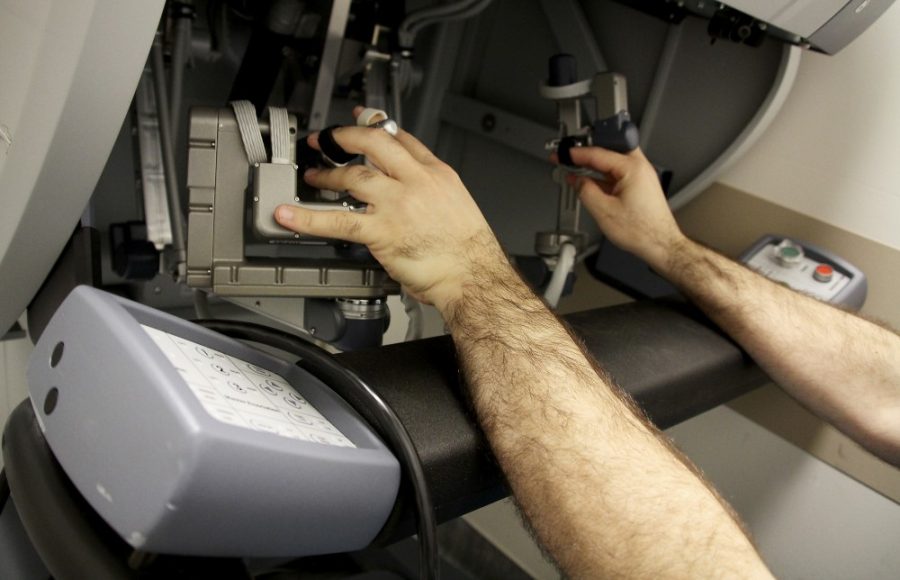Like the iPhone, the UA’s surgical robot machine just “gets better with time,” said Dr. Carlos Galvani.
According to Galvani, an associate professor of surgery and director of Minimally Invasive and Robotic Surgery at the University of Arizona Medical Center, the newest da Vinci Surgical System robotic machine offers more for surgeons and surgical residents than earlier version did. The first and second generation of the robot came to the College of Medicine in 2004 and 2007. The newest debuted last year.
The third-generation machine provides a better HD image, is slimmer and has two surgical consoles, which allows for two surgeons to actively participate in a surgery.
“People compare this a lot to a flight simulator,” Galvani said, where surgeons can “take it over at any time.” When a new surgeon is still undergoing surgical training, the third-generation da Vinci machine provides instructors with the ability to step in and correct any technical errors that might have occurred.
“You actually have the power to take it away from the trainee,” Galvani said. All this is possible, he said, “with just the press of a button.”
Although the machine has played a role in training new surgeons, that isn’t the main goal, according to Galvani.
“It’s not only a teaching machine,” he said. “That’s not the message we want to give. Our goal is to perform better surgeries for patients.”
In offering surgeons the opportunity to employ cutting-edge technology, the da Vinci machine is not restricted to a specific specialty.
“This is a multi-specialty program,” Galvani said. “Almost every procedure that can be done with this robot can be done at the university.”
Galvani said that, for example, a heart surgeon used to have to break a patient’s chest open in order to perform surgery. With da Vinci, he said, “Now you don’t have to do that. You can do it with a small incision.”
Despite the fact that robotic machines like da Vinci make surgery more efficient, robotics have not yet become the most popular form of surgery. Roughly 5 percent of surgeries nationwide are performed using robotic machines, according to Galvani. However, more patients are requesting this type of surgery. The most popular surgery for robotics is a hysterectomy, as patients don’t have as much down time, he said.
From a university perspective, Galvani said having these machines gives the UA a large responsibility in terms of medicinal technology.
“I think we as a university have the obligation to show the path,” Galvani said. “The advantage that we have here is that we have everybody in the house. We’re seeing a huge number of patients getting better care.”
Amar Gupta, director of the UA’s Nexus of Entrepreneurship and Technology Initiative, said the machines complement the university’s prestige in the medical field and predicts that they will be much more affordable in the future.
“Any time we have a departure from tradition, you open yourself to legal action,” Gupta said. “Everyone is very cautious. This is one of the reasons the cost goes up initially.”
But, he said, new procedures are never initially justified based on cost alone, and that when someone has suffered trauma, the first hour is important. Machines like da Vinci offer surgeons the opportunity to perform faster, more effective surgeries. Because machines like da Vinci allow surgeons to take action more quickly, Gupta said, they in turn improve health care.
“It’s really modernizing medicine,” Gupta said. “Any time these technologies are first introduced, the cost is higher. Over time, the cost will stabilize and become less because you will be able to reduce the number of medical professionals involved.“
Galvani also said that while surgery with the da Vinci machine is expensive, the end result is completely worth it.
“For us, it is totally gratifying, because it makes surgery faster,” he said.









